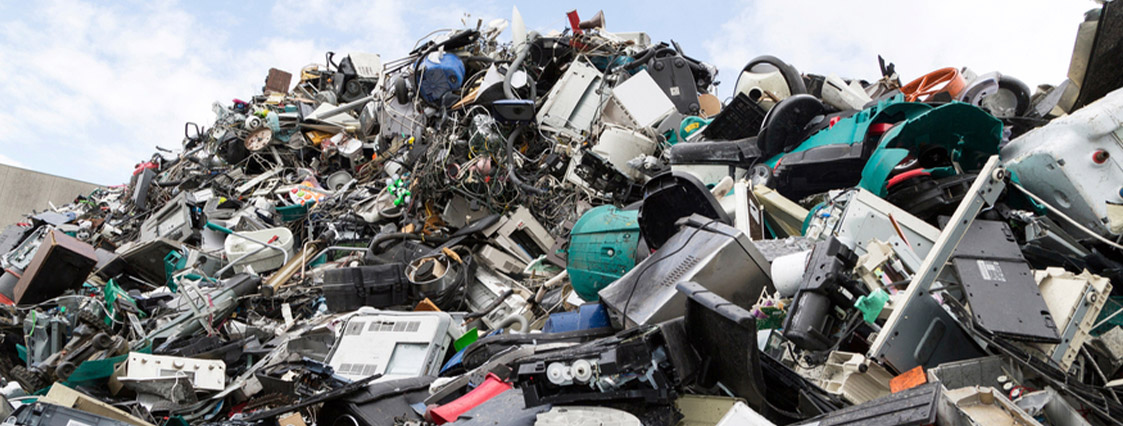Anwesha Borthakur
During the recent years, mobile phones (or rather smartphones) have become an essential element of our routine lives. Here is an electronic equipment we hold on to closely most of the time and are increasingly dependent on for conduct of our day-to-day activities. A recently published article in popular environmental fortnightly ‘Down to Earth’ estimated that an individual checks his or her mobile phone 58 times in 16 waking hours a day on an average. The current Covid-19 pandemic has boosted this reliance further. Teleworking has become a new norm for the office-going populace, academic activities are turning online, and this trend is expected to continue at least for some more time. Perhaps, a blended working or learning module involving both online and traditional in-person activities will be a standard soon. The market of the mobile phones is already very attractive resulting in consumers purchasing newer products in short intervals. During the pandemic, many people are forced to invest in a smartphone or update their mobile phones to facilitate remote working or education among many other such activities.
Although several research envisage the life of a smartphone to be 10 to 12 years, we observe a much shorter lifespan in reality owing to planned obsolescence, an enticing consumer electronics market fueled by advertising gimmicks, considerable lack of public awareness and associated negligence to environmental concerns etc. For instance, have we ever wondered what are the constituents of our mobile phones? From where do the metals present in our smartphones come from? What happens to our dysfunctional electronic products once they are discarded and sent to recycling facilities or scrapyards? Maybe, it’s high time to ask these questions in a world laden with environmental and climate change challenges.
According to the World Economic Forum, electronic waste (E-waste) from smartphones constitutes approximately 10% of the total volume generated. It implies to a waste quantity (from smartphones and similar products) equivalent to over 3,00,000 double decker buses! E-waste is the stream of waste that results from obsolete electrical and electronic equipments. In other words, any product with a battery or a plug at the end of its useful life becomes E-waste. However, mobile phones are just one example of this toxic category of waste, and the actual list of products fall under the purview of E-waste is very long. From our computers, televisions, washing machines, hairdryers to medical equipments, electronic toys and automated machines, the amount of electronic equipments contributing eventually to the E-waste volume is indeed high.
As per the United Nation’s Global E-waste Monitor 2020, with a 21% increase in just 5 years, 53.6 million metric tonnes (Mt) of E-waste were generated globally in 2019. This volume is forecasted to reach 74 Mt by 2030. Today, India is one of the largest producers of E-waste in the world along with its counterparts in the emerging economies, ranking third after the USA and China. The Minister of State for Environment, Forests and Climate Change informed the Rajya Sabha in July 2021 that the country saw a massive 31.6% increase in E-waste generation as compared to the previous year. Now, what could we, as individuals, do about the rising volume of E-waste? The first thing to do possibly is to educate ourselves about the hazardous characteristics of this waste stream and environmental implications of our increasing purchase and disposal behaviour.
We must remember that manufacturing of our electronic products has enormous environmental ramifications. For instance, rare earth and precious/valuable metals present in our electronics are mined destroying pristine natural ecosystems in Africa, Asia or Latin America. Recovering these metals from E-waste to ensure a circular economy is still a sparse practice. Simply by extending the life of our electronic products, we can contribute to a reduction of environmental burdens resulting from indiscriminate mining activities. Accordingly, efforts for ‘repairing’ should precede ‘recycling’.
A restraint from random purchase of electronics influenced by alluring publicity efforts or peer pressure must be exercised. Next time, when we are ready to buy a new smartphone for example, we must first ask ourselves a few questions: “do I really need a new phone” or “why do I need a new phone when my older one is still perfectly working” or “can I repair my phone instead of buying a new one”? In the current global scenario characterized by deteriorating environmental parameters, asking these questions will be instrumental in shaping a sustainable planet. On the occasion of International E-Waste Day 2021, let’s begin by acknowledging the silent and hidden environmental costs of our individual actions.
(The author is Researcher KU Leuven, Belgium)
Trending Now
E-Paper


